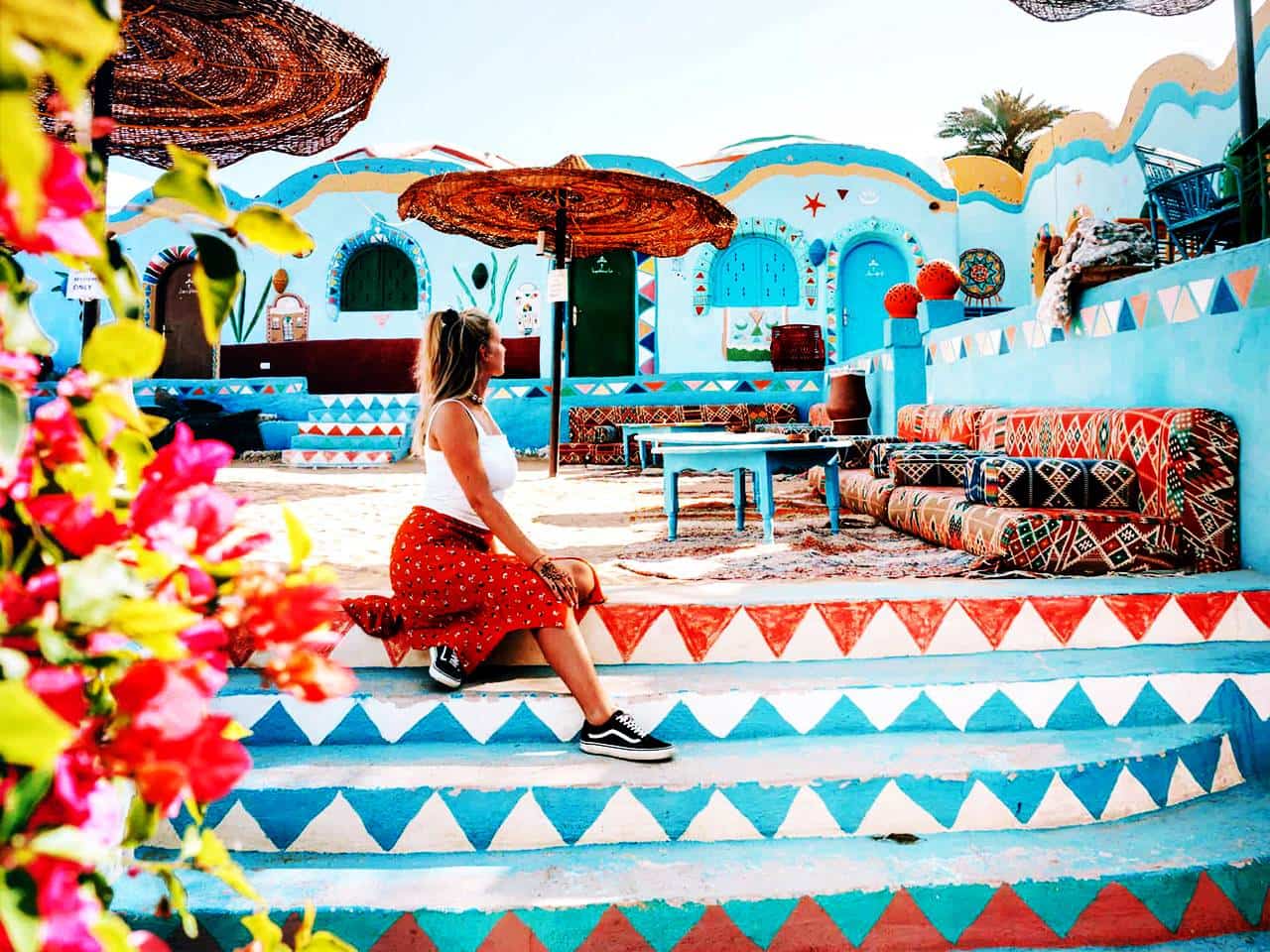Welcome to the heart of Nubia, where the sands of time whisper tales of ancient civilizations and the vibrant culture of Nubian communities. In this exploration of Traditional Nubian Architecture, we embark on a journey to discover the enchanting Nubian villages along the banks of the Nile. Top Ten Egypt Tours invites you to witness the living history, intricate designs, and warm hospitality that define the essence of Nubian life.
I. The Nubian Essence:
Geographical Marvels:
Nestled along the banks of the Nile River, Nubian villages boast a unique landscape, characterized by palm-fringed shores and domed mud-brick houses. The juxtaposition of the river against the arid desert creates a picturesque setting that captures the essence of Nubian life.
Colors of Nubia:
Nubian architecture is a burst of vibrant hues, with houses adorned in a palette of blues, greens, and yellows. Each color holds cultural significance, reflecting the Nubian people’s connection to nature and their desire to create a visually stunning environment.
II. Mud-Brick Mastery:
Building Materials:
Mud-brick, a traditional construction material, takes center stage in Nubian architecture. Explore the artistry of the Nubian masons as they skillfully mold and layer mud bricks to construct homes that stand resilient against the elements.
Architectural Styles:
The traditional Nubian house features domed roofs and arched doorways, creating a distinctive silhouette. These architectural elements not only showcase the mastery of the builders but also serve practical purposes, providing natural ventilation and cooling in the scorching Nubian heat.
III. The Cultural Tapestry:
Nubian Artistry:
Witness the intricate details of Nubian artistry displayed on the walls of homes. Geometric patterns and symbols tell stories of Nubian heritage, showcasing a rich cultural tapestry that has withstood the test of time.
Courtyards and Gathering Spaces:
Nubian villages are designed to foster a sense of community. Explore the central courtyards where families gather to share meals, stories, and laughter. The warmth of Nubian hospitality is palpable in these communal spaces.
IV. Sustainability and Adaptation:
Harmony with Nature:
Nubian architecture reflects a harmonious relationship with the environment. Mud-brick structures contribute to natural cooling, and the use of locally-sourced materials ensures sustainability. Discover how Nubian communities have thrived for generations by adapting to their surroundings.
Challenges and Innovations:
Learn about the challenges Nubian villages face in the modern era and the innovative solutions they employ. From eco-friendly initiatives to community-led conservation efforts, Nubian communities are at the forefront of preserving their architectural and cultural heritage.
V. Experiencing Nubian Hospitality:
Homestays and Cultural Immersion:
Top Ten Egypt Tours offers travelers the opportunity to experience Nubian hospitality firsthand. Stay in traditional Nubian homes, partake in local festivities, and savor authentic cuisine to immerse yourself in the heart of Nubian culture.
Guided Tours to Nubian Villages:
Elevate your journey with guided tours that delve into the history, architecture, and daily life of Nubian villages. Our experienced guides will lead you through the narrow alleyways, sharing tales of resilience and tradition.
Traditional Nubian architecture is not merely about bricks and mortar; it’s a testament to the endurance of a vibrant culture that has thrived along the Nile for centuries. Join Top Ten Egypt Tours on a journey through Nubian villages, where the past meets the present, and every building tells a story. Immerse yourself in the warmth of Nubian hospitality and let the magic of Nubian architecture captivate your senses.



Comment (0)